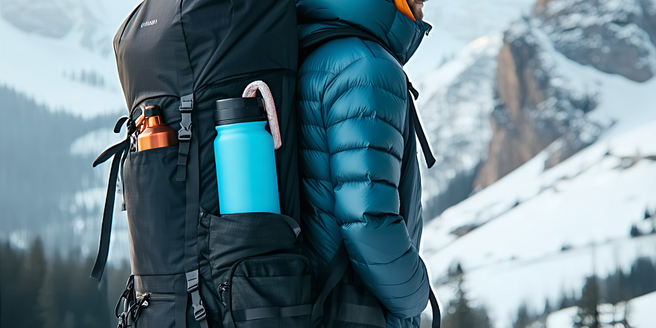
Choosing the Right Backpack for Winter Conditions
Selecting the appropriate backpack for winter conditions is crucial. The choice should consider volume, weight distribution, and material durability against moisture. A backpack with at least 60 liters of capacity is recommended, ensuring sufficient space for clothing layers, food, and winter gear. When it comes to materials, choose a backpack constructed from durable, water-resistant fabric. Additionally, models with reinforced seams and waterproof zippers can offer extra protection. Opt for a backpack with a strong frame to support the weight of substantial winter equipment. Comfort is also paramount; ensure the backpack has padded shoulder straps and a supportive waist belt to distribute weight evenly. With these considerations, you can safeguard your gear from harsh elements and enjoy improved comfort during winter backpacking adventures.
Layering Techniques to Stay Warm and Dry
Mastering layering techniques is essential for staying warm and dry in winter backpacking. The base layer, made of moisture-wicking material like merino wool or synthetic fabric, keeps sweat away from the skin. The mid-layer provides insulation, with options like fleece or down jackets offering warmth. An outer layer, or shell, protects against wind and water, with materials like Gore-Tex being ideal for breathability and weather resistance. Each layer should fit comfortably over the other without restricting movement. It’s important to adjust layers according to activity level and weather changes. For instance, shedding layers during intense activity can prevent overheating, while adding layers when stationary preserves warmth. This adaptable approach ensures you remain comfortable and protected in unpredictable winter conditions.
Essential Gear for Cold Weather Backpacking
When backpacking in cold weather, having the right gear can make a significant difference. Insulated sleeping bags rated for sub-zero temperatures are a must. A high R-value sleeping pad provides crucial insulation from the cold ground. Multi-fuel stoves that operate efficiently in freezing conditions are essential for cooking. Waterproof boots with reliable grip and gaiters protect feet from snow. Don’t forget insulated gloves, thermal hats, and balaclavas to preserve body heat. Headlamps with extra batteries ensure visibility during limited daylight hours. Trekking poles provide stability on slippery terrains. An avalanche beacon is a wise investment if hiking in snow-heavy regions. By equipping yourself with these essential items, you enhance safety and comfort, allowing you to focus on the beauty and challenge of winter backpacking.
Organizing Your Pack for Optimal Accessibility
Proper organization of your backpack is key for efficiency and accessibility on the trail. Place heavier items like food and water close to your back for better weight distribution. Use compartments and stuff sacks to keep gear organized and easy to find. Items needed frequently, such as snacks, a map, or a first aid kit, should be readily accessible in outer pockets or the top of the pack. Consider a packing system like lining the inside with a large water-resistant bag to keep everything dry. Compression straps can help tighten the load and maintain balance. Always ensure essential gear such as waterproof layers and navigation tools are within reach. Thoughtful organization not only enhances convenience but also ensures you’re prepared for changing conditions on your winter backpacking adventure.
Food and Hydration Strategies in Winter
Proper food and hydration strategies are crucial during winter backpacking. The cold increases caloric needs, so pack energy-dense foods like nuts, dried fruits, and hard cheeses to sustain your energy levels. Freeze-dried meals provide warmth and nutrition at camp. Hydration is equally critical, despite the cold reducing thirst sensations. Carry insulated bottles to prevent water from freezing, and consider hot drinks to warm your core. Melting snow is an option, but always use a reliable purification method to ensure its safety. Scheduling regular breaks to eat and drink helps maintain energy and morale. Remember, a well-fed and hydrated body is better equipped to handle cold stress and maintain heat. These strategies ensure that nutritional needs are met, aiding in a successful winter backpacking trip.
Safety Measures for Winter Backpacking Challenges
Safety is paramount in winter backpacking, where weather and terrain present unique challenges. Start by thoroughly researching your route and checking weather forecasts to anticipate possible hazards. Inform someone about your itinerary and expected return. Carry a map, compass, and GPS device for reliable navigation. In avalanche-prone areas, always check for warnings and carry a beacon, probe, and shovel. Understanding how to use them is crucial. Prepare for emergencies with a first aid kit, emergency bivy sack, and whistle. Pack extra layers, food, and a backup power source for electronics. Travel with a group when possible, as there’s safety in numbers. Regularly assess environmental conditions and be prepared to alter plans for safety. These proactive measures can significantly enhance safety when confronted with winter backpacking challenges.
